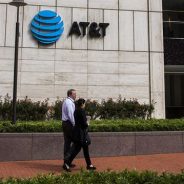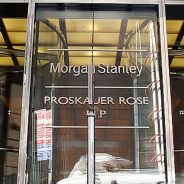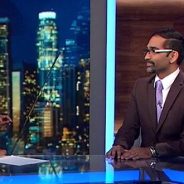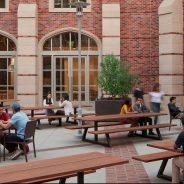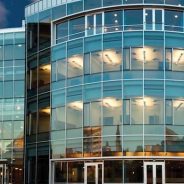Search results for :
Just How Did USC Marshall’s MBA Program Attain Long-Elusive Gender Parity?
This fall, USC Marshall became the first top-tier MBA program to reach gender parity. The incoming full-time MBA Class of 2020 has as many women as men—actually a few more—52 percent. This notable achievement is a massive 20-point percentage leap from last year when women made up just 32 percent of the incoming class.
“We are proud to achieve this distinction,” Dean James G. Ellis said in a press release. “Our ongoing focus on diversity and inclusion is playing out in real numbers now. This is only the start.”
Gender Parity in Business School
While many other top schools have been working to reach gender parity over the last few years, they’ve thus far fallen short of the 50-50 mark. According to a 2017 report by the Forté Foundation and the Graduate Management Admission Council (GMAC), the average enrollment of women in full-time MBA programs at 36 business schools is 37.8 percent. That’s an improvement of less than one percent from 2016, when it was 37.1 percent, and only a few percentage points up from 2013, when it was 34 percent.
Several other leading schools have hovered in the low 40s in recent years—including Michigan Ross (43 percent), Yale School of Management (43 percent), Dartmouth Tuck (44 percent), and the University of Pennsylvania’s Wharton School (44 percent). And Northwestern’s Kellogg School of Management recently announced that its incoming Class of 2020 is 46 percent women, a record for the school. These figures all make USC Marshall’s achievement even more impressive, though it’s also a statement on women in business.
In general, women earn 60 percent of graduate degrees and fill up more than 50 percent of graduate classes, even those in male-dominated professions such as law and medicine. MBA programs, though, have lagged stubbornly behind, which many believe to be the result of a combination of factors. Some of these include the timing of business school, which is later than law or medical school because of the required prior work experience; the return on investment, and the fact that men with an MBA out-earn their female counterparts throughout their careers.
Still, there have been strides forward. Just five years ago, only three of the top 25 schools enrolled more than 40 percent women in their MBA programs. Last year, nearly half had reached that mark. Some schools have yet to release class profile information for the current incoming class, so it remains to be seen how this year compares to last. Regardless, USC Marshall reaching the 50-percent mark is a standout achievement, particularly since it hadn’t even broken 40 percent before this year.
“I’m super thankful and proud to be here at this particular point in time,” Gabriela Omenn (2020) said. “One of my key interests beyond business school is to elevate women and get them into positions of power, so it’s directly aligned with where I want to go in my career. It feels really amazing to be among such a high class of students, and I believe it’s going to be something that pays off in dividends after school is done.”
USC Marshall MBA Class of 2020, More Than Half Women
To get an idea about how USC Marshall became the first top business school to break through the gender parity barrier, we talked to Evan Bouffides, assistant dean and director of MBA admissions.
-
Recruiting Efforts Were Strong
According to Bouffides, this past year was a solid one for recruiting at USC Marshall across the board, with improved outreach to all prospective applicants, women included. But Marshall did place a concerted effort on reaching women applicants specifically, he said. These targeted outreach efforts included participation in Forté Foundation events (Marshall is a Forté member school), programming for women as part of on-campus visits, and online marketing campaigns.

Evan Bouffides, USC Marshall Assistant Dean and Director of MBA Admissions / Photo via USC Marshall
“We’ve been a bit more deliberate and certainly more comprehensive in the way we send messaging out about our program, about the admissions process, and about the university,” explained Bouffides. “ In general, I feel that we touched a lot more people via electronic communication than we have in the past.” In particular, the school increased its follow-up communication with candidates who attended various events.
Bouffides also thought January’s Women’s Week recruiting event was the best one yet. More than 100 women visited campus for this one-day event to learn about the school, meet other applicants, and get a taste of what it’s like to be a USC Marshall MBA student.
“Not only did we have a larger group than in the past, but we also, hopefully, presented a better case for ourselves than we had in the past,” said Bouffides. “Our students also did a great job contributing to the decision-making process in a tangible way.”
Current students play a big role in recruiting efforts for prospective applicants at USC Marshall. Both Marshall’s ambassador students, who work directly with admissions, and student members of its Graduate Women in Business club, reached out personally to candidates and admits as part of the admissions process to share their unique student perspectives. Many of these students also helped organize some of the recruiting events for prospective applicants.
“We also have a follow-up program, where once a person is admitted, we put them in touch with a lot of different groups, students being the preeminent group,” Bouffides explained. “The students did a great job answering questions and convincing people to join us.”
-
Improved Rankings and Reputation
Out of the many factors that may have contributed to USC Marshall reaching gender parity this year, the school’s improved rankings and reputation had a distinctly positive effect. Marshall jumped four places to 20th in the latest U.S. News ranking of leading MBA programs. And the Financial Times ranked Marshall as one of the best business schools for women to pursue an MBA (20th in the world and 12th in the United States).
“Our rise in rankings and the good press we’ve had over the last year or two has helped make us more attractive to candidates,” said Bouffides. “This, along with our other efforts, helped bring the entire class together.”
-
A Great Yield
Another factor that contributed to USC Marshall’s gender parity was this year’s impressive yield—the percentage of admitted students who ultimately enroll. It was a significant change from last year’s class, when less than a third of admitted female students (31.3 percent) chose to enroll. This year, 40.1 percent of admitted females entered the full-time MBA program. This meant that more of the students USC Marshall wanted actually attended, resulting in the highest-quality class on record.
The average GMAT score for the Class of 2020 is 705, up from 703 last year, and the average GPA is 3.5 compared to 3.48. This year’s incoming class also includes a record number of underrepresented minorities—21 percent of domestic students, compared to 16 percent previously.
“This year’s applicant pool was the strongest in our program’s history,” said Bouffides. “They brought the highest average GMAT score and the highest average GPA. The women, in particular, were extraordinarily well prepared.”
USC Marshall in the Future
So, where does USC Marshall go from here? We asked Bouffides if the school hopes to reach the same levels in coming years, but he said there is no prescribed quota for women in future classes. The goal is always just to bring in the most robust possible class, and diversity is a big part of that—gender parity being just one aspect.
“First, let me explain that we didn’t go into the admissions cycle this year stating that gender parity was our goal. We never do that for any particular metric when it comes to admissions,” said Bouffides. “We didn’t go into the season with parity as a goal, but it was an outcome of the fact that we had a large and talented group of women applying to the program. My hope is that now that we’ve hit this mark, it will be easier going forward, and hopefully, we’ll be even that much more attractive to women and men as well as they think about schools to which they may apply.”
As for Omenn, she sees USC Marshall as a model for the future where diverse backgrounds represented by different genders and groups can come together to share their ideas and perspectives—elevating discussions for a richer experience.
“Gender parity is a good model for future applicants, not just at USC but at any business school,” said Omenn. “In years to come, applicants will be able to see more of themselves in business school, which will hopefully inspire them to keep striving for their goals.”
This article has been edited and republished with permissions from our sister site, Clear Admit.
Top MBA Recruiters: AT&T
Finding employment after graduating from an MBA program can be a challenge for some. Thankfully, new MBAs are never alone in the process. From companies that actively recruit talent from business schools throughout the country, to MBA programs themselves helping to facilitate interviews and job referrals for their students, students should be sure to take advantage of resources available to them.
A look at 2017 employment data from a top MBA program like the University of Chicago’s Booth School of Business reveals the overwhelming trend: a whopping 89.2 percent of students found employment through university-facilitated avenues, be it on-campus recruitment and interviews, networking events, or through a Booth-facilitated summer employer. The success of campus recruitment benefits everyone, not only because universities are willing to open their doors and advocate for their students, but because top companies go out of their way to recruit young talent and create opportunities for them.
One such company is American multinational telecommunications holding company, AT&T. Founded in 1983 as the Southwestern Bell Telephone Company—part of the Bell Telephone Company with roots in the late 19th century—today AT&T has more than 254,000 employees worldwide and $190 billion in revenue. With a commitment to MBA graduates through internships and early career development programs, AT&T makes the grade as a top recruiter and employment destination for MBAs.
What Is An AT&T Career Like for MBAs?
It should be no surprise that MBAs love working at AT&T when you know the kind of investment this company makes in the educational development of its employees. In 2016, AT&T spent $250 million on employee training and invested roughly 20 million hours into the process. With so many opportunities for ambitious team members to accelerate their careers through leadership and development programs, this is the perfect company for those looking to quickly rise into leadership roles.
AT&T has been awarded many times for its workplace culture, including being named on Fortune‘s ‘100 Best Companies to Work for in 2018‘ and 3rd overall on the Diversity Inc. list of the ‘Top 50 Companies for Diversity‘ in 2018.
Of course, it pays to have an AT&T career, even beyond a positive workplace culture. According to PayScale data, MBA graduates at AT&T earn an average annual salary over $95,000. This can range as high as $142,000 for those in operations management. Employees, including interns, are rewarded with competitive compensation and benefits, including paid holidays, time off, and discounts for AT&T products.
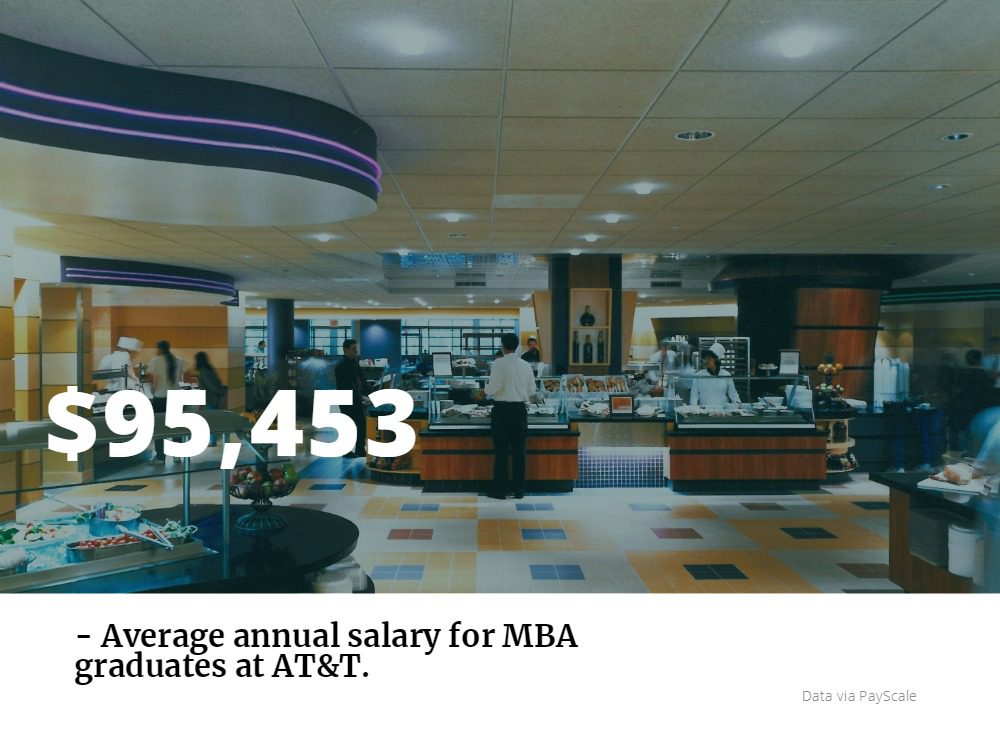
Getting Started
MBA students interested in starting an AT&T career should keep an eye out for the various recruitment events set up through their university, where they can apply on campus and may be selected to interview with college recruiting managers. Because of the company’s heavy investment in a diverse workforce, AT&T also has a strong presence at recruitment conferences like the Forté Foundation for female business leaders, Reaching Out MBA for LGBT candidates, and the National Black MBA Association (NBMBAA).
Many MBAs start their AT&T career through its many internship opportunities, which are found at locations throughout the country and typically last 10-12 weeks. AT&T offers these paid internships a huge variety of fields, such as data analytics, cybersecurity, entertainment group technology, software development, and leadership, among others.
In addition to internships, MBA graduates may apply for one of the many AT&T career development programs. These are full-time, paid rotational programs that may last anywhere from two to three years, providing hands-on experience, exposure and opportunity. Development programs at AT&T include:
- B2B Sales
- Cybersecurity Development
- Engineering and Operations Development
- Finance Leadership Development
- Leadership Development
- Software Development
What Does AT&T Look for in MBA Candidates?
When hiring for its MBA internships and development programs, AT&T looks for students with at least three years of professional experience with the ability to collaborate on complex issues and thrive in a leadership role. The company seeks candidates who are passionate about the role technology can play in people’s lives and its capacity to transform.
In addition to the internships and early career programs, AT&T also looks for more experienced MBA holders for higher-level executive and management positions. For these roles, the company seeks candidates with at least five to eight years in experience related to the role with the ability to work in a team, be a self-starter, and think critically.
Morgan Stanley Still Loves MBAs and the Feeling Is Mutual
Though interest in finance and accounting careers may be decreasing, gaining a job at an investment banks such as J.P. Morgan Chase, Goldman Sachs, and Morgan Stanley is still attractive for many MBA graduates. In 2018, a career in finance is the third most sought-after industry, according to a recent Graduate Management Admission Council (GMAC) study. Part of that reasoning is due to the high annual base salary ($115,000), which is this third highest, only behind general management ($125,000) and IT/MIS ($120,000).
So, what does it look like to work for a company such as Morgan Stanley as an MBA graduate? Is it your golden ticket to the future in 2018? We’re taking an inside look. Continue reading…
Are Business School Neighborhoods Becoming More Gentrified?
When universities are found in downtown urban areas, gentrification most often follows. It almost seems inevitable since universities bring in more individuals with higher education, draw in more money, and increase new businesses. But what does the rapid increase of gentrification statistics mean for the business school students looking to start their career in a new area?
What Is Gentrification?
First, we need to look at what gentrification is. In simple terms, it’s the influx of more affluent residents moving into urbanized neighborhoods. At the outset, it may sound good, but it can be controversial.
Gentrification may improve the financial quality of a neighborhood, but it can also force the relocation of current residents and businesses due to increasing costs. Often, the process of gentrification also shifts a neighborhood’s racial and ethnic composition, as well as the average household income. This can lead to community displacement for lower-income families in gentrified areas, some of which often live in the area for several generations.
However, there is a grey area. Gentrification happens when a location becomes increasingly attractive. At that point, more high-income individuals move into the area bringing in investments in the community and leading to improved infrastructure and economic development.
What Causes Gentrification?
According to a recent comprehensive review of gentrification completed by researchers at UC Berkeley and UCLA, gentrification most often occurs when more public transportation is available. People are more attracted to transit hubs because they allow more privileged groups to trade car commutes for transit and signal a large-scale commitment to neighborhood upgrading, which, in turn, leads to increased employment opportunities.
Another spur to gentrification is education. Quality schools, universities, colleges, and medical centers tend to shape gentrification. The substantial federal support that public universities receive brings money into neighborhoods through many means including housing and housing subsidies for faculty and staff. A CityLab study revealed that universities and other academic institutions are key to attracting the creative class, creating more market demand and political pressure for better amenities, schools, and other services.
Analyzing University Neighborhood Gentrification Statistics
Since universities have such an impact on gentrification, we thought we’d take a look at what areas and schools have been most affected. While gentrification is not something most urban areas should aspire for, it happens, and it’s important to know where it’s occurring the most.
To find out, we looked at a recent study by RentCafe of the most gentrified areas in the U.S. The study took a look at the 2000 Census and the 2016 American Community Survey to see the changes that took place over a decade and a half across 1,000 U.S. ZIP codes. The study found that there are easy ways to quantify gentrification statistics when looking at median home value, median household income, and the population that holds a bachelor’s or higher degree.

Based on the results of the study, we analyzed the top five MetroMBA universities in gentrified areas.
-
University of Southern California
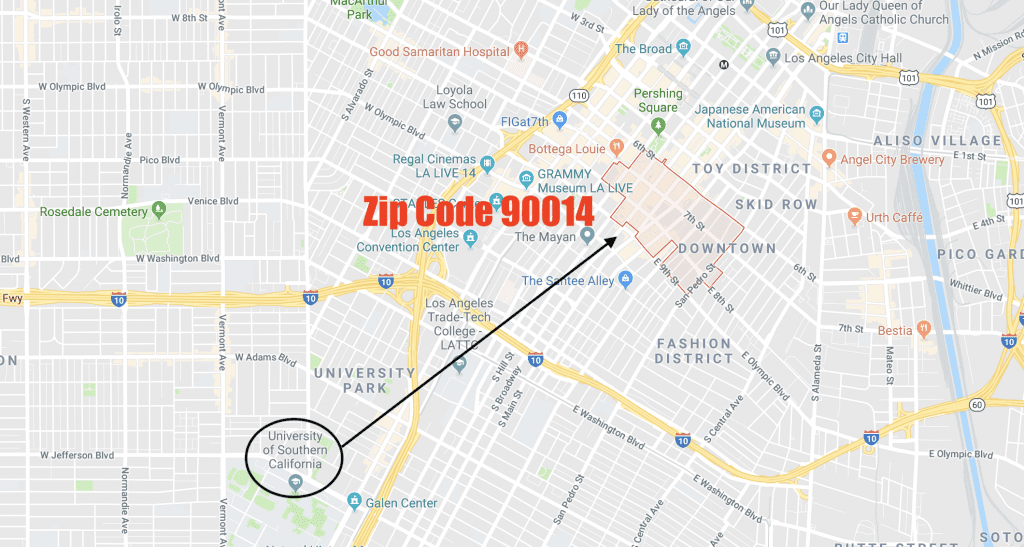
Located less than five miles away from ZIP code 90014 in Los Angeles, USC Marshall is just on the edge of the most gentrified area in the U.S. Over the last 16 years, this area has witnessed:
- A 707 percent increase in home values
- A 95 percent increase in median household income
- And an 857 percent increase in people holding bachelors or higher degrees
So, while some at USC might be fighting gentrification, it may not be working. Just last year, USC opened up a brand-new $700 million USC Village with a Target Express, Trader Joe’s, and 15 restaurants, transforming the surrounding neighborhood. And even though as part of the development USC provided $20 million for construction of off-site subsidized housing, there are still concerns.
“Across the street, land values are going to increase,” Joe Donlin, Associate Director of Strategic Actions for a Just Economy, told KPCC. “We know the landlords are going to rent at higher levels of rent.”
-
Howard University
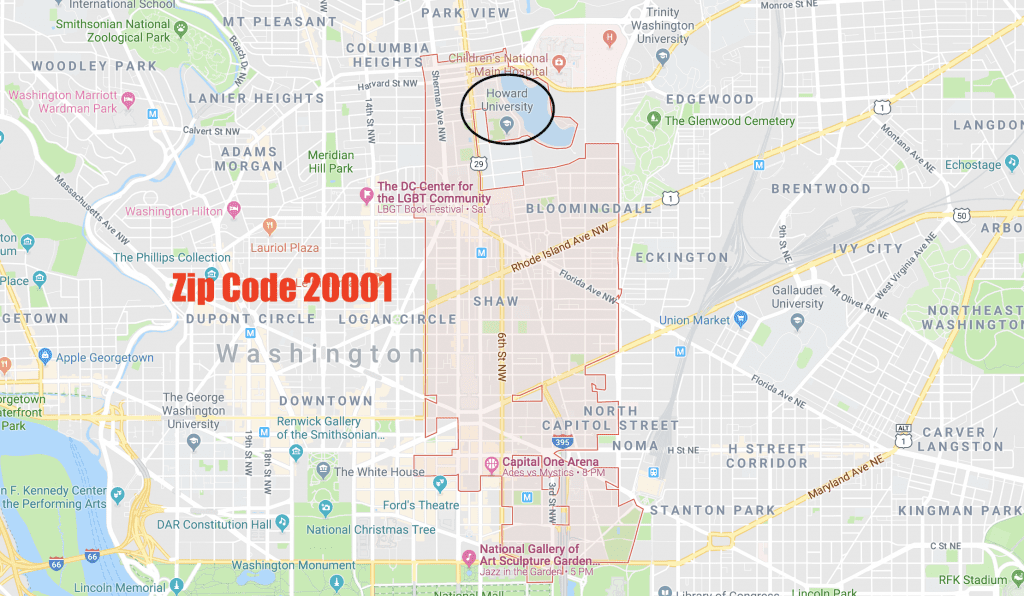
Located in Washington, D.C. Zip Code 20001, Howard University’s campus is located directly in the second most gentrified area in the U.S. Over 16 years, the area has witnessed:
- A 207 percent increase in home values
- A 163 percent increase in median household income
- And a 212 percent increase in people holding bachelors or higher degrees
The gentrification statistics of the Howard University area hasn’t gone unnoticed. According to NPR, there has been a drastic change:
“The area, located just a couple of miles north of Capitol Hill, was once working-class and black. But as hundreds of new residents move to D.C. each month, more non-black residents move into Howard’s neighborhood. And as property values rise, the university is trying to capitalize on the hot real estate market.”
-
University of Houston — Downtown
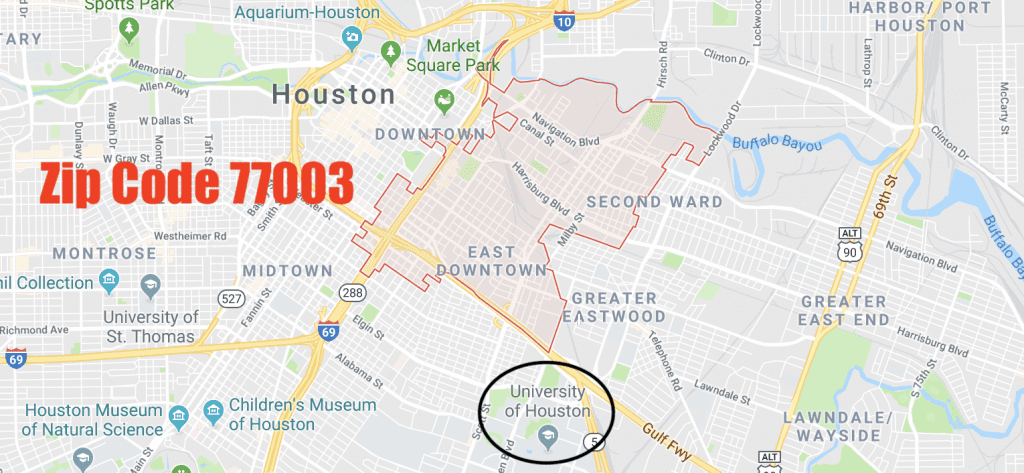
Located just steps away from zip code 77003, The University of Houston campus is located near the third most gentrified area in the U.S. In the last decade and a half, the area has seen:
- A 284 percent increase in home values
- A 71 percent increase in median household income
- And a 443 percent increase in people holding bachelors or higher degrees
Much of the gentrification can be laid at the university’s feet as its student housing footprint has expanded into surrounding neighborhoods over the last decades. According to the Houston Chronicle, “In the portion of the neighborhood closest to downtown, which includes Emancipation Park, median home values increased 176 percent between 2000 and 2013, according to an analysis of census estimates conducted by Governing.”
-
University of Pennsylvania
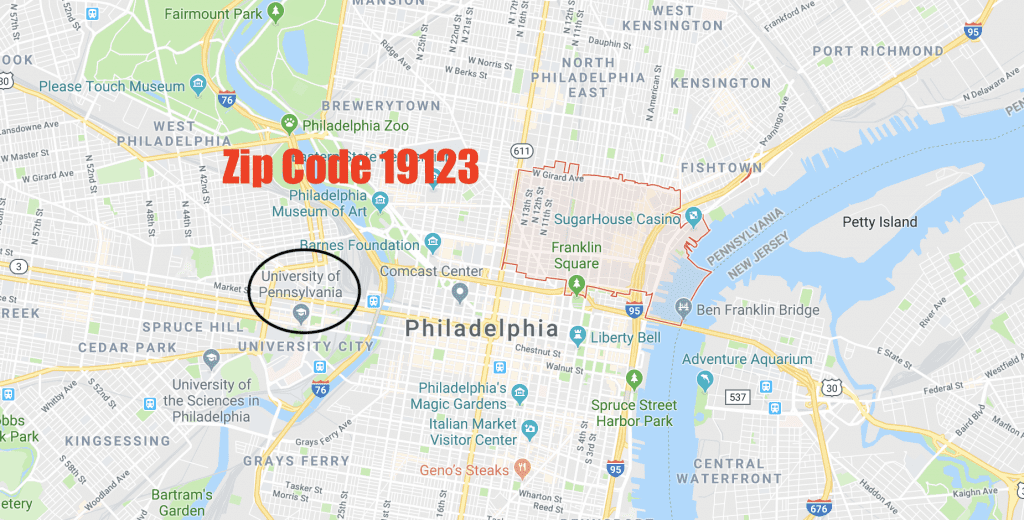
The Wharton School at UPenn is less than five miles outside the fourth most gentrified neighborhood in the country: zip code 19123. This area, over the last 16 years, has noticed:
- A 203 percent increase in home values
- A 95 percent increase in median household income
- And a 230 percent increase in people holding bachelors or higher degrees.
In fact, UPenn has had a complicated history with gentrification over the years, dubbed Penntrification by some. The problem, according to The Daily Pennsylvania, is that in West Philadelphia Penn students’ demand for housing is displacing low-income families. There have even been protests criticizing the university for causing gentrification in the area.
-
Texas Christian University

Fort Worth, TX, contains the sixth most gentrified area in the U.S.; just two miles away from Texas Christian University (TCU). Over 16 years, the area has witnessed:
- A 323 percent increase in home values
- A 103 percent increase in median household income
- And a 122 percent increase in people holding bachelors or higher degrees
While Fort Worth’s growth has brought new life to the city’s urban core, it’s also sky-rocketed property values. In particular, the areas around TCU are growing quickly. The university recently completed a $100 million renovation for its football stadium—just five years after its last overhaul, which reportedly cost $164 million.
New MBA Jobs: IBM, BB&T, Comcast, Deloitte, and Chevron
Want to know the best new MBA jobs out there? This guide is where you want to be. Browse some of the top job openings at the following top MBA employers below, and apply today! Continue reading…
Employee Surveillance, Startup Contests, and More – Boston News
Let’s explore some of the most interesting stories that have emerged from Boston business schools this week.
The Surprising Effects of Employee Surveillance – Questrom School of Business Blog
BU Questrom School of Business professor Michel Anteby recently co-authored new research that explores the ways in which increased surveillance of employees can lead “to workers’ strikes and sometimes even quitting their jobs altogether.”
The article points to a 2011 experiment where TSA managers installed cameras to monitor officers “as an attempt to stop the disappearance of baggage in airports.” According to TSA officers, they felt they “as though their managers were merely looking for a reason to discipline them.”

New BU research finds that workplace scrutiny often leads to a worse work environment, even if it is inadvertently / Photo via bu.edu
According to Anteby’s research, “under such scrutiny, one tends to lose sight of the bigger picture, which ends up with employees feeling undervalued and over scrutinized.”
You can read the full article here.
These 12 European Startups Are Using Technology to Improve Opportunities For Low-And Middle-Income Workers – MIT Sloan Newsroom
The MIT Initiative on the Digital Economy’s Global Inclusive Innovation Challenge announced its 12 European finalists, all of which are working to improve economic opportunity for workers. According to the article, “the competitors are judged on vision, impact, participation, and scalability.”
Initiative Director Erik Brynjolfsson writes, “If we employ inclusive innovation globally, it could be the best thing that ever happened to humanity. We can have more wealth, better health, and widely held prosperity.”
According to the article, the European finalists will travel to “Darmstadt, Germany, in early September, where they will pitch their ideas at a regional competition. The winner of each category then goes on to compete in November during the Global Grand Prize Gala at MIT. The gala includes four $250,000 prizes, one for each category.”
The 12 European finalists, organized by category, are as follows:
Skills Development and Opportunity Matching
- Data4You, an all-ages coding boot camp.
- Jobiri, which “assists people with finding jobs through an AI-driven career adviser.”
- micro:bit, which “provides tiny programmable computers for students and teachers.”
Income Growth and Job Creation
- ABURY’s “Design meets Craft” connects “designers and artisans through a digital platform to find creative project partners, and connect with the global market.”
- mecasa is an “online platform connecting caretakers with senior individuals who need daily support.”
- ProGlove is a “smart glove designed to scan and streamline manufacturing and logistics work.”
Financial Inclusion
- hiveonline is a “mobile platform offering small- and micro-businesses administrative help and access to financial services.”
- Trezeo, which “provides a mobile financial platform for independent workers.”
- Sherpa, which “offers insurance to people who are self-employed, freelancers, contractors, and other entrepreneurs.”
Technology Access
- BLITAB, a “tactile tablet designed for blind and visually-impaired users.”
- Pangea Electronics “builds sustainable and eco-friendly technology.”
- Teqmine Analytics uses “AI to help customers with their research and development questions.”
You can read more about the event here.
Think You’re Having a Heart Attack? If You’re a Woman, Insist on a Female Physician – Harvard Business School News
New PNAS research co-authored by HBS Associate Professor Laura Huang, along with the University of Minnesota-Twin Cities’ Brad Greenwood and Washington University in St. Louis’ Seth Carnahan finds that of “more than 500,000 heart attack patients admitted to hospital emergency departments in Florida between 1991 and 2010, female patients treated by male physicians were less likely to survive than patients of either gender treated by female physicians or male patients treated by male physicians.”
Moreover, “survival rates among female patients treated by male physicians improved with an increase in the percentage of female physicians in the emergency department and an increase in the number of female patients previously treated by the physician.”
In “Patient-Physician Gender Concordance and Increased Mortality Among Female Heart Attack Patients,” the researchers write:
“These results suggest a reason why gender inequality in heart attack mortality persists: Most physicians are male, and male physicians appear to have trouble treating female patients. If female patients tend to be more challenging for male and female doctors to diagnose and treat, the patterns we document may reflect the fact that the most skillful physicians (i.e., female physicians) provide the highest return to their skills when treating the most challenging patients (i.e., female patients).”
You can read more about the research here.
MIT Sloan Celebrates 4th Annual Women’s Week in 7 Cities Worldwide
The MIT Sloan School of Management’s #MITSloanWomen campaign just celebrated its fourth anniversary. One of the cornerstone events of the campaign, which offers female prospective applicants and current MBA students new ways to interact with the school and build their post-graduation careers, is the annual Women’s Week.
Since 2014, Women’s Week has brought female MIT Sloan alumnae and the Sloan admissions team to cities across the United States and abroad to interact with women interested in the Sloan MBA. The events are designed specifically for female MBA applicants and offer deep-dives into what it means to be a Sloan woman.
“Women’s Week is a great chance to hear stories from MIT Sloan female alumnae who are making an impact,” explained Shauna LaFauci Barry, the associate director of admissions at MIT Sloan. “It is a unique opportunity to network with a community of women who are exploring the MBA.”
Women’s Week took place this past July in seven cities around the world: Washington, DC; Cambridge, MA; San Francisco, Chicago, Seattle, New York City, and London. Women gathered at each location to enjoy a featured TIMTalk (Think. Inspire. Motivate), as well as a panel of local female alumnae from the two-year MBA, Sloan Fellows MBA, and Executive MBA programs.
The events were a resounding success.
“This year’s events surpassed 1,000 women registered,” explained Barry. “There were 1,600 registrants for over seven events including one live stream. This even included two new cities: Seattle and London.”
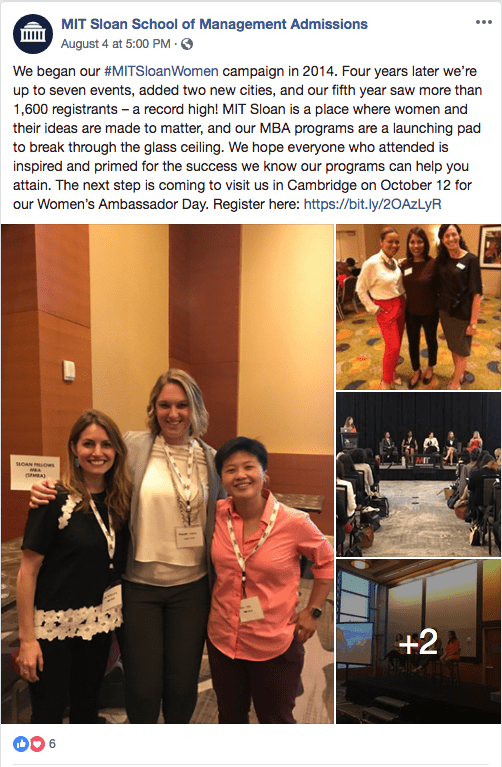
To learn more about the success of Women’s Week and what it was like to attend, we reached out to Shauna LaFauci Barry for an in-depth chat.
Women’s Week 2018 Theme
The theme of this year’s events was “MIT Sloan Women: Creating Ideas Made to Matter,” and their focus was on celebrating Sloan women who are making an impact.
According to Barry, all of the alumnae panelists were “incredibly accomplished, articulate, thoughtful, [and] authentic. Each one brought something unique to the event. We were so grateful to have such great MIT Sloan Women Ambassadors.”
Meet the San Francisco Women’s Week TIMTalk Speaker
Barry was particularly impressed by Sephora Innovation Lab Senior Manager Nelly Mensah (MBA ’15), the San Francisco’s TIMTalk speaker. In her talk, Mensah discussed the importance of creativity, collaboration, and being value-driven.
“I am still singing her praises in my mind,” said Barry. “She was agile and adaptable. When my computer started rebooting right before her slide presentation, she rolled with everything. She brought a great sense of humor to her talk—a vulnerability and honesty on the importance of creating a culture at Sephora Innovation Labs where innovation ripples through.”
Mensah tied everything in her talk into the culture of MIT Sloan, her activities while in school (Retail Club, internship in Milan, etc.), and how they contributed to where she is now. There were three key takeaways:
- Cross-Cultural Collaboration: At MIT Sloan, Mensah was part of the Hacking Arts. Now, she runs Hackathons at Sephora.
- Creating Space and Time for Creativity: There is always an opportunity to be creative; make time for it and make sure you get input from people throughout the organization.
- Be Value-Driven: Sephora feels strongly about their value of empowering women, and all of their activities align with this (i.e. Women Who Code).
Women’s Week Takeaway
Barry explained what she hoped attendees would take away from not just the San Francisco event, but every Women’s Week event. “We want them to be energized about their own ideas and to see how an MBA from MIT Sloan can help them achieve their goals,” she said. “We want them to learn something new and come away from the event wanting to explore more.”
Why Women’s Week?
Here are just a few reasons why a prospective female MBA candidate should attend next year’s MIT Sloan Women’s Week:
- It offers excellent exposure to a variety of stories from MBA women at various stages of their careers.
- It showcases how the MIT Sloan MBA has served as a gateway to making women’s ideas matter.
- It inspires attendees to imagine what might be possible in their future.
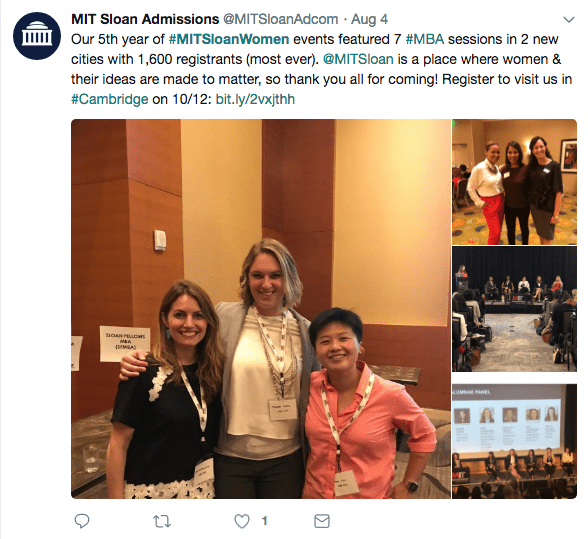
Coming Soon
Fret not if you missed this year’s Women’s Week. You still have a chance to attend a few female-focused events by registering for one of MIT Sloan’s Women’s Ambassadors Days this fall. The first event, MBA Women’s Visit Day, occurs on October 12 and will feature faculty member Gita Rao discussing finance and action learning at MIT Sloan. You can register here.
Other events include the Women’s Ambassadors visits, which allow women to come to class for an on-campus visit, attend a class, and join a member of the Admissions Office for a presentation about the school.
- October 29: MBA Women’s Ambassadors Program Morning Visit
- October 29: MBA Women’s Ambassadors Program Afternoon Visit
- November 19: MBA Women’s Ambassadors Program Morning Visit
- November 19: MBA Women’s Ambassadors Program Afternoon Visit
- December 6: MBA Women’s Ambassadors Program Morning Visit
- December 6: MBA Women’s Ambassadors Program Afternoon Visit
Northwestern Kellogg MBA Class of 2020: 46 Percent Women, 27 Percent U.S. Minorities
Northwestern University’s Kellogg School of Management announced today that women will make up 46 percent of the incoming two-year, full-time MBA Class of 2020. That’s a four-percentage point jump over last year and a record high for the school. U.S. minorities are also up—comprising 27 percent of this year’s first-year students, as compared to 25 percent last year. Meanwhile, average GMAT (732) and GPA (3.6) were identical to last year. Class size also remained constant at 478.
“I am very, very thrilled with the diversity of the class,” Melissa Rapp, Kellogg Director of Admissions for full-time MBA and MSMS programs, told Clear Admit. “And not just because of the percentages but also the quality of candidates across the board,” she said. International students will make up 34 percent of the incoming class, drawn from 46 countries around the globe, a modest one-percentage point decline amid soft overall international applicant volume to U.S. schools.
Rapp pledged that she and her team will keep striving to attract the most diverse classes possible. “I firmly believe that diversity in the classroom leads to better learning and a more impactful experience for every student who is here,” she said.
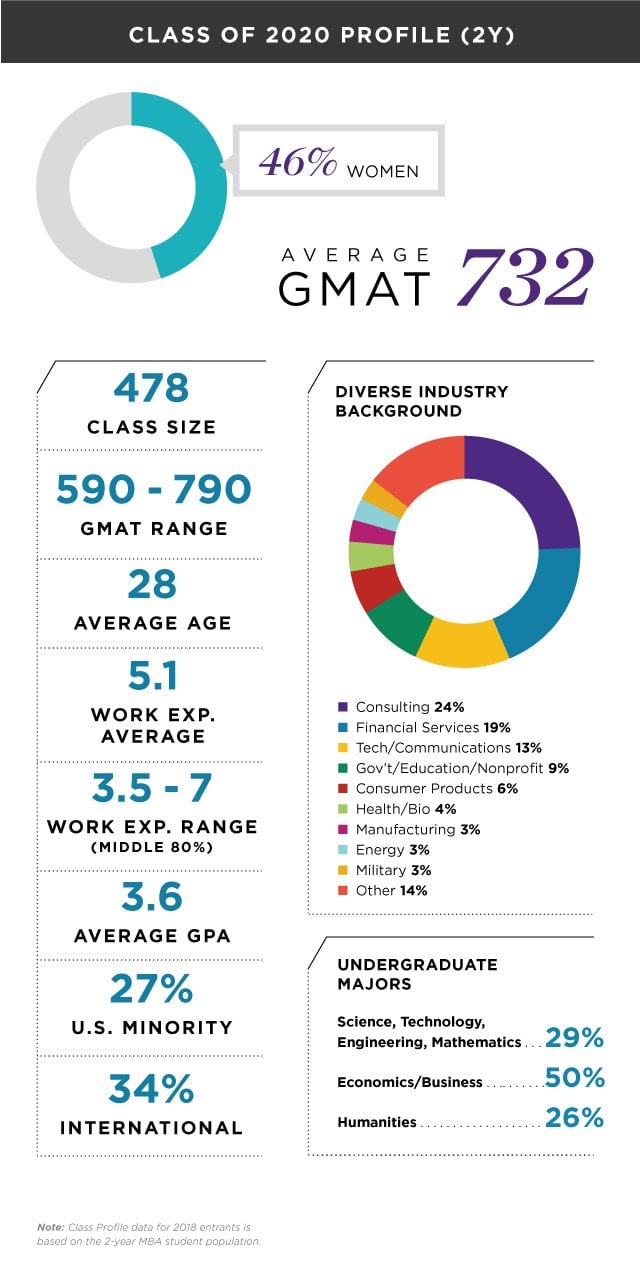
Steady State Elsewhere Is Great
For the past six years Kellogg’s average GMAT score has been on the rise, climbing from 708 in 2012 to 732 last year. Rapp said she is not at all concerned to have it remain static at 732 this year. “That our average GMAT and GPA have stayed the same shows that we continue to attract a really outstanding pool of applicants year after year,” she said.
Average undergraduate GPA also didn’t budge—coming in at 3.6 for now the third year running. As for what applicants studied while in college, 50 percent of this year’s incoming class majored in business or economics, up from 49 percent last year and 45 percent the year before that. STEM majors fell slightly to 29 percent, down from 30 percent the year before. Humanities majors both this year and last made up the remaining 26 percent.
Varied Professional Experience
In terms of pre-MBA work experience, approximately one in four incoming Kellogg students—24 percent—come from consulting, down from 27 percent last year. Another 19 percent come from the financial services industry, also a slight decrease from last year’s 20 percent.
Up this year? Students who have worked in tech/communications grew from 12 to 13 percent. “I think the changes that we see in our class really reflect the changes that we see in the business world,” Rapp said. “There are more people from tech, which is not surprising for anyone since there is more tech in the world than there ever has been.” Students with government/education/nonprofit experience also increased, from 7 to 9 percent.
Overall Rapp is pleased to see Kellogg continuing to attract a wide range of students from across functions and industries. “The variety continues to be very strong both in terms of our incoming students and our outgoing graduates,” she added. “Again, those differences and that diversity is what makes the Kellogg experience so strong.”
Kellogg’s Efforts to Support Women May Off
By far the biggest news today is that Kellogg has come closer than ever before to gender parity with its newest incoming class. USC Marshall School of Business made headlines last month by becoming the first leading business school to cross the 50/50 mark—women will make up 52 percent of the Marshall Class of 2020, a staggering 20-percentage-point jump over last year. At UT Austin’s McCombs School, which has also shared a preliminary Class of 2020 profile, the percentage of women slipped year over year, from 40 to 38 percent. And at Cornell’s Johnson Graduate School of Management, which welcomed it new Class of 2020 students to campus last week, women make up 33 percent, a five-point gain over last year.
“It’s really pretty exciting,” said Rapp of Kellogg’s 46 percent women. She credits the gains in female enrollment in part to the vision and leadership of outgoing Kellogg Dean Sally Blount, who served as dean from 2010 until she stepped this past spring.
Kellogg has also called on its current female students, including members of the Kellogg’s student-led Women’s Business Association (WBA), to take part in admissions outreach activities in hopes that they can forge meaningful connections with prospective female candidates early in their exploration process.
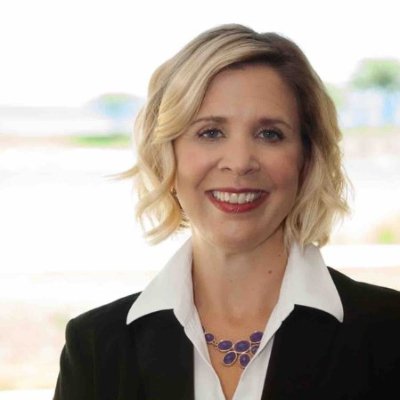
Melissa Rapp, Kellogg Director of Admissions for the full-time MBA and MSMS programs.
New this year, the school also convened its inaugural Global Women’s Summit in May. More than 1,200 women participated “live”—with 800 at Kellogg’s Global Hub in Evanston and the rest via extension events in London, Hong Kong, New York, Boston, San Francisco, Miami, Seattle, and Chicago hosted by companies including Amazon, Microsoft, and Starbucks. Over the course of the two-day event, the #KelloggWomen hashtag was trending in Chicago and generated 2.7 million overall impressions. “The breadth of engagement the summit allowed for provided a really nice bridge from prospectives to current students to our alumnae population,” Rapp said.
Kellogg also this year hosted its third-annual Women’s Leadership Seminar, a unique five-week lineup for second-year MBA students combining lectures, workshops, networking events, and alumni panels on recruiting issues women face. “The goal is to ensure that our high-potential women are equipped to pursue and navigate careers that have deep personal and professional meaning,” Rapp said.
“This combination of everything from lunch and learns to seminars to summits really helps the women here know that Kellogg understands the unique situation they are in and the challenges they will face on their journey to become impactful leaders and is proactively talking about that and helping them navigate that.”
Those Kellogg women, it seems, have been doing a good job of helping prospective female applicants see Kellogg as a place they want to be, too.
This article has been edited and republished with permissions from our sister site, Clear Admit.
The Five Biggest Texas Internship Destinations for MBAs
Whether an internship is optional or required for your MBA program, interning at top companies in your metro can not only offer hands-on work experience, but the chance to develop professional relationships that can shape the rest of your career.
Major Texas metros like Houston and the Dallas-Fort Worth area are increasingly becoming known for their roles in business and technology, making these cities the perfect spot for students to begin their professional careers with summer internships. Often these internships can lead to continued work and career opportunities after graduation. For example, 100 percent of students at a top MBA program like TCU’s Neeley School of Business earned internships in 2016, nearly half of whom continued projects for their employer on into the following year.
The Five Biggest Texas Internship Destinations
Hewlett Packard (HP)
Headquartered in Palo Alto, CA, the multinational informational technology company, HP, has a strong presence in Texas’ biggest metros. With a massive range or products, from personal computers to 3D printers, HP has 55,000 employees around the world and a net income of $2.53 billion USD.
HP and their separate Enterprise Service business, Hewlett-Packard Enterprise, offer a number of internships for MBA students and are considered one of the top intern destinations for schools like the Naveen Jindal School of Management at the University of Texas at Dallas and Rice University’s Jones Graduate School of Business.
HP offers a 12-week paid summer internship program for students in a variety of fields. Current openings include positions like:
- Personal Systems MBA Project Management Intern (HP)
- Personal Systems MBA Marketing Summer Intern (HP)
- Financial Associate MBA Intern (Hewlett Packard Enterprise)
Texas Instruments
It likely doesn’t come as a surprise that technology company Texas Instruments, headquartered in Dallas, is a top employer for MBA interns in the region. The company, which as of 2017 had a profit margin of $3.68 billion, has a number of different career paths available for their interns, with rotational opportunities after students have graduated that can help accelerate their career. Business roles at the company include focuses such as Finance and Operations, Human Resources, Information Technology, Marketing Communications, and Supply Chain Analyst.
With internship opportunities in engineering as well as the business fields, Texas Instruments consistently tops lists for MBA interns in programs like the aforementioned TCU Neeley School of Business and other top Dallas schools.
AT&T
Headquartered in Dallas, AT&T today is the world’s largest telecommunications company and second largest provider of mobile phone services in the country. And with 254,000 employees worldwide, it makes sense that this massive company would seek to create a talent pipeline for MBA students in the area. AT&T tops the list as an internship destination for students in schools like Texas A&M University’s Mays Business School and Jindal at UT Dallas, among others.
AT&T offers summer internships in a number of different focuses and fields, which provide real-world projects, specialized training programs and leadership exposure. Currently open positions with the company include a Leadership Internship, Finance Internship, and Software Development Internship.
Deloitte
Another company making an impact for student interns at schools like Neeley, Rice, and Mays, is “Big Four” accounting organization Deloitte. The company is headquartered in London but with over 263,000 employees throughout the world. In 2017, Deloitte officially became the fourth largest privately owned company in the United States.
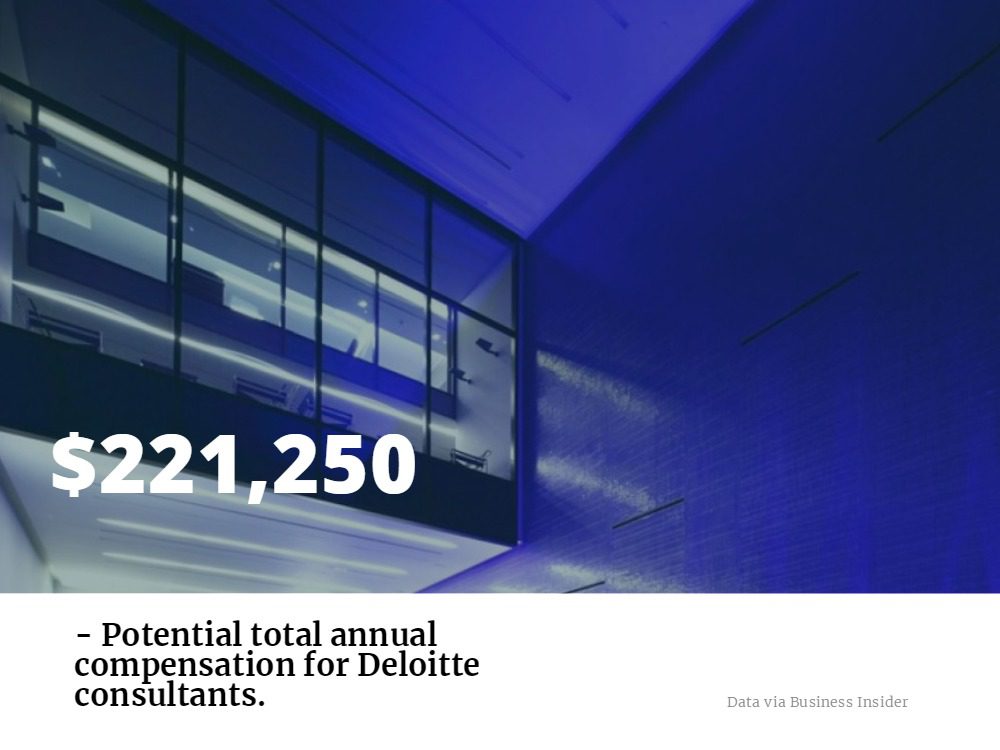
Deloitte’s commitment to recruiting talented finance students is reflected in the many MBAs who find both internships and full-time positions with the company. A Texas internship at Deloitte typically last eight to ten weeks during the summer and continue through at least one semester of the school year. MBA student interns have access to a number of incredible resources during their internship at Deloitte, including a consulting immersion program, women’s leadership launch, and the chance to participate in a number of case competitions.
Accenture
With headquarters in Dublin, Ireland, the work of global management consulting company Accenture may seem worlds away from Texas, U.S. But with nearly 500,000 employees around the world, this Fortune Global 500 company has left its mark as a top employers of MBA interns at schools like TCU Neeley and Rice’s Jones School of Business.
Accenture’s internship program is a ten to twelve week experience throughout the summer that encourages students to empower themselves through innovation. Student interns have access to programs like the Student Leadership Conference, Buddy Program, Summer Analyst Day of Service, and group outings. Those who are able to turn their internship stays with Accenture may also be awaiting a hefty payday when it comes to full-time employment after earning an MBA.
“According to Management Consulted, post-MBA salaries at Accenture hover around a base salary of $140-145,000 with a $25,000 signing bonus, an $8,000 relocation check and a performance bonus up to $44,000. Interns typically clock $31 per hour, plus overtime and a signing bonus.”
MetroMBA’s New Program Search Tool Redefines How to Find the Right MBA For You
An MBA is far more than an entry point into potentially lucrative and shape-shifting career—it’s deeply personal. And while many companies offer a broad view of the MBA world, finding the right MBA for you was always harder than it needed to be. That is, until MetroMBA launched its very own Program Search Tool, built with you in mind, to help navigate the all-too-often confusing world of business school.
New MBA Jobs: GE, Tesla, Microsoft, and More
Current MBAs and business school grads looking for jobs have come to the right place: Here’s our weekly listing of new and exciting MBA jobs. This week’s list features opportunities areas like supply chain and tech, and in a number of exciting metros and locations. Continue reading…
Ryan Patel Returns for Paul Merage Alumni Day, and More – Los Angeles News
Take a look at the latest news coming out of business schools in the Los Angeles metro.
New Accreditation Earned – Mount Saint Mary’s University News
The Accreditation Council for Business Schools and Programs (ACBSP), the country’s only organization which provides specialized business accreditation for all degree levels, recently offered accreditation to business programs at Mount Saint Mary’s University, Los Angeles.
ACBSP evaluates a variety of factors to determine which programs qualify for accreditation, including leadership, quality of academic programs, faculty credentials, strategic planning, educational support and more. According to ACBSP Chief Accreditation Officer Steve Parscale, “this accreditation is evidence that Mount Saint Mary’s is committed to providing the highest quality of business education for their students.” The Certificate of Accreditation was presented by Parscale at the annual ACBSP Conference 2018 in Kansas City, MO in June.
You can read more about the ACBSP and Mount Saint Mary’s degree programs here.
Merage Alumnus Patel Discusses the Importance of Global Diversity at 2018 Alumni Day – UCI Paul Merage School of Business Newsroom
Ryan Patel, graduate of UC Irvine’s Paul Merage School of Business‘ Fully Employed MBA program, recently returned to his alma mater to serve as keynote speaker for Merage’s annual Alumni Day.
Today a world traveler and global business executive, Patel has worked at major including frozen yogurt chain Pinkberry, where he served as Vice President of Global Development. During his tenure Patel was responsible for the chain’s expansion from 95 locations to 270, across 23 countries. Since his graduation from the Merage FEMBA program in 2008, he has become a frequent contributor on CNN and in 2017 was named as one of nine executives changing the world with their brands by Inc. Magazine.
Patel served as Keynote speaker for Merage’s Alumni Day this year, commenting on the power of influence and the importance of it to a leader. More than 120 guests attended the alumni event, listening to Patel’s commentary on the importance of diversity for building a global team. “Embrace different cultures and integrate shared values for optimal results,” Patel advises students.

Ryan Patel, speaking with at his alma mater, on 2018 Alumni Gathering Day / Photo via Chris Lee
Patel also reflected on his own experiences at UCI and the ways it informed his career path. “Throughout my time at UCI, I was able to interact with so many people from various industries and backgrounds … this created a great foundation for understanding how to work with and manage diverse teams as a future board director and during my tenure as vice president of global development at Pinkberry” he comments.
Read more about Ryan Patel and the UCI Paul Merage School of Business here.
Studios Welcome Entertainment Finance Students – LMU Newsroom
Throughout the most recent academic school year, finance students at the Loyola Marymount University College of Business Administration had the opportunity to benefit from strong ties between their university and the entertainment industry through a series of visits to major film studios.
The idea was developed by Mark Sgriccia, MBA (’08), Vice President of Worldwide Content Operations and Strategy at Lionsgate, who wanted to attract top talent from LMU MBA students for employment at the studio. After pitching his idea to LMU Associate Professor of Finance David Offenberg, Ph.D., the idea grew into planning a number of visits at studios like Universal Pictures, Netflix and Twentieth Century Fox.
Throughout the year, students had the chance to gain valuable insights and advice from top executives and LMU alumni. Patty Saienni (’98), vice president of accounting and financial reporting at Twentieth Century Fox,” commented on the LMU students and their visit to the studio. “I am very impressed!” she said. “Students asked good questions and were motivated. Studio employees were excited to have LMU students visit Twentieth Century Fox and you could clearly see the students were excited to be here.”
Read more about studio visits at LMU here.
MBA Job Types: Entry Level v. Experienced
Contrary to popular misconception, choosing to pursue an MBA degree is a decision that can be made at any point in your career. From programs that allow students to jump right in to their degree after undergrad to those that require over ten years of work experience, the wide variety of degree programs means there’s no one way to get your MBA. Because of this, there are a large variety of MBA job types.
However, professional experience is still an important part of an individual’s career development, Even a group of MBAs—having the same foundational business education—will likely find differences in the kinds of jobs they can find after graduation, the levels of pay, and the kind of skills required for these jobs, based on their professional experience. Below, we break down some of the major differences you’ll find between MBAs just starting their careers and those with more professional experience.
MBA Job Types
One of the first major differences for MBAs (and non-MBAs) at the entry level versus those with more experience is the types of jobs available to them. Even though having an MBA degree often helps professionals accelerate their careers and reach higher level management positions, it is unlikely that an MBA with little experience will jump immediately into these senior management roles.
Below are some common entry-level MBA jobs:
- Accountant: an accountant is responsible for maintaining company and personal financial records. Typically, students who pursue accounting specializations within their MBA degrees are prepared to pass the rigorous CPA examination by the time they complete their degree and begin in entry or mid level accounting jobs.
- Medical and Health Services Manager: Healthcare Administration is a quickly growing career for many MBA graduates, with many schools now offering majors or specialization in the field. According to data Bureau of Labor data in 2016, openings in the medical and health services management field are expected to grow by 20% over the next ten years.
- Financial Advisor: Financial advisors are crucial for all types of organizations, which might be why finance is one of the most popular MBA majors. Most MBAs with a high GPA and internship experience already have the requirements needed to get started in a financial advisor position.
Below are some common jobs for experienced MBAs:
- Accounting Manager: accounting managers are responsible not just for overseeing the company’s finances, but also the daily activities of the accounting department. With more experience, certified CPAs have more opportunities to leverage their MBAs into senior management roles.
- Hospital CEO: MBAs with extensive experience, typically 8-10 years, in healthcare administration may take roles in high level positions like Hospital CEO, the highest ranking official in a hospital organization.
- Financial Manager: at least five years experience or more are required for jobs in finance management, which expects candidates to have a lot of hands on experience. Financial Managers oversee all aspects of company or personal finance.
Levels of Pay
It might go without saying that more experience probably means a higher salary. Even though MBAs do make, on average, more than those without an advanced business degree, that number will continue to climb the more experience you get.
- For a field like accounting, Accountants with an MBA degree will make an average of $51,022 per year, while roles that require more experience, like an Accounting Manager, will make close to $72,489 a year.
- In the healthcare management field, a Healthcare Administrator will make on average $74,188 per year while a Hospital CEO will make significantly more at $164,332
- For those in the field of accounting, there is also a significant difference depending on experience. For a role like Financial Advisor, employees make $58,652 per year on average, compared with $99,115 each year for a Financial Manager.
Skills and Experience Required
Another major difference for entry level and experienced MBAs is the type of experience and skills required for their particular roles. Research has often shown that an MBA education provides a number of so called “soft skills” which are often sought by employers, and are important for many entry-level jobs. These skills may include things like the ability to work in a fast-paced environment, critical thinking and problem-solving skills, the ability to communicate effectively, leadership potential, and the ability to take risks.
Conversely, those seeking higher level jobs that require more experience will likely find job posting that ask for specific, industry-related knowledge, and experience. These employers might ask applicants to demonstrate prior experience in the industry and show proven success within their field.
Different Types of Companies
Each year, top companies from around the world recruit MBA talent. Many major companies, like CVS and New York MetLife even offer MBA training/acceleration programs that hire recent graduates and fast track them to a management position within the year. Still, two companies—Apple and McKinsey & Company—which consistently make the list as top companies for MBAs to work for typically require anywhere from 7-15 years experience for some of their senior level MBA jobs.
For entry level MBAs, getting a foot in the door at these companies may mean starting with an internship or as part of a special MBA recruitment program, whereas those with both the degree and several years of experience may have an opportunity to jump right in at the senior level.
LeBronomics: UCLA Professor Explains What to Expect in Los Angeles
When basketball ultra-star LeBron James inked his new deal with the Los Angeles Lakers, it was more than just a big move for him and fans: it was a big move for the Los Angeles economy. That’s because a star such as James can create a significant financial imprint in any city he plays, according to a study co-authored by Harvard University Associate Professor Daniel Shoag and Stan Veuger of the American Enterprise Institute.
The LeBron James Effect
“James has a statistically and economically significant positive effect on both the number of restaurants and other eating and drinking establishments near the stadium where he is based, and on aggregate employment at those establishments,” the study explains. “Specifically, his presence increases the number of such establishments within one mile of the stadium by about 13 percent, and employment by about 23.5 percent.”
It’s easy to see the difference that James’ presence can make when you take a look at the course of his career. He spent the first seven years in Cleveland, left for Miami for four years, and then returned to Cleveland in 2014, and there’s a definitive impact to the economy each time. Specifically, the effects were felt most strongly within one mile of the arena, but even within seven miles, a difference was still obvious.
As a quick example, the study put together two charts showing the number of restaurants within a one-mile radius of the stadium in both Miami and Cleveland during his presence and without.
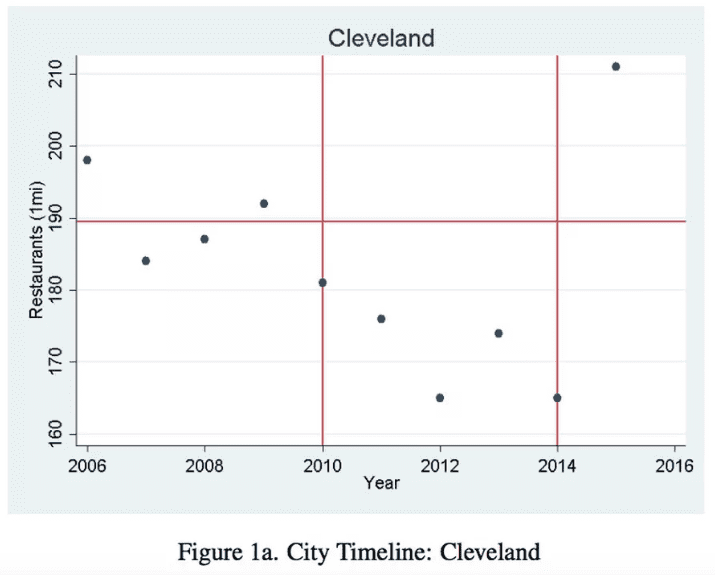
Note: The figure shows the number of restaurants within one mile of the Quicken Loans Arena in Cleveland for each year between 2006 and 2016. LeBron James left Cleveland Cavaliers in 2010 and rejoined in 2014. The horizontal line represents the average number of restaurants within one mile of the stadium before 2010.
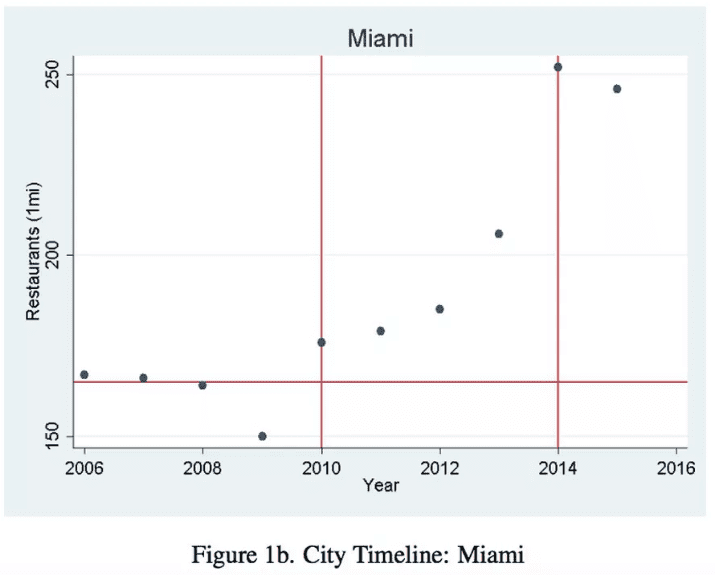
Note: The figure shows the number of restaurants within one mile of the American Airlines Arena in Miami for each year between 2006 and 2016. LeBron James joined Miami Heats in 2010 and left in 2014. The horizontal line represents the average number of restaurants within one mile of the stadium before 2010.
So, based on all this information, what can Los Angeles expect from the James effect? We talked to Jay Tucker, the executive director for the Center of Management of Enterprise Media, Entertainment, & Sports (MEMES) at the UCLA Anderson School of Management, to get his opinion. With more than 20 years of experience in the sector, Tucker was able to offer a detailed look at James and the Los Angeles economy.
The LeBron James Effect In Los Angeles
“Selfishly, I’m excited that he’s coming,” Tucker starts out. “LeBron James is a generational athlete. He’s also a champion of social causes and a shrewd businessman. His arrival will create many opportunities for Los Angeles.” Those opportunities range from easily quantifiable variables such as more local restaurants and bars to less easily definable improvements that could cover everything from better public transport to increased merchandising and new business interests.
In general, Tucker sees Los Angeles as an excellent location for James because of the city itself and the team. LA, being more spread out and without a major city center, could gain even more restaurants, bars, and hangouts than other cities. Part of the reason is because Los Angelenos are already used to driving long distances to get to games at the Staples Center.
At the same time, the Lakers have a solid brand identity that is tied very closely to the city. This will make it even easier for LeBron James to create an impact because Lakers’ fans are already ready and willing to show support for their team. The truth of the matter is that Lakers game attendance is already impressive without James, with James it will only grow.
In addition, Tucker sees many opportunities for LeBron James on the business side. “LeBron has a lot of business interests, and there’s a good possibility that he’ll bring many of those interests here to LA,” Tucker said. “Who knows what the impact could be if LeBron invests in a local talent agency or line of entertainment. There are a ton of opportunities for him to plug into the LA ecosystem and be a part of Silicon Beach, so it will be interesting to see what happens business-wise. It’s really hard to imagine someone as smart, talented, and driven as James sitting back and playing basketball without getting involved in what the rest of LA is doing.”
As for downstream effects that Tucker expects, they’re difficult to quantify but could cover a wide range. For example, studies have shown that successful sports teams improve city moral. Then there’s the fact that as more fans try to attend Lakers games from around the city, there will be a higher demand for public transportation, which could encourage updated infrastructure.
However, Tucker does warn that Los Angeles can’t just sit back and rest on its laurels if the city wants to gain the full economic impact of James. Just as the city already offers packages for individuals looking to visit all the theme parks—Six Flags, Disneyland, Universal Studios, Sea World—the city should also look into creating Lakers’ game packages. This would be a great way to partner with different initiatives around LA and bring in outside visitors.
“With respect to LeBron’s larger business interest, the Chamber of Commerce should get involved as well,” Tucker says. “It would be smart to get the team into meetings to talk about the unique business opportunities in the area.”
What MBA Students Can Learn From LeBron James
Lastly, we asked Tucker what MBA students should take away from the James effect and his overall career. One of the first things he pointed out was James’ positive reputation.
“We live in an era where the media is at your fingertips 24/7,” Tucker says. “And one of the most interesting things about James is that in an environment where anything you do for good or ill can be tweeted out, he’s managed to maintain an image of someone who is socially responsible, who handles himself professionally, and who is a family man. That is something that many people fail to do.”
In addition, Tucker feels that students should pay attention to James’ ability to be multi-faceted. Not only is he deeply invested in his basketball career, but he also has business interests, social interests, and more. James does well on and off the court.
“There’s plenty to learn from his life examples and experience,” Tucker explains. “Some of what can be learned is based on his personal choices, but it’s also about the larger environment he’s in and the scope of opportunities he represents.”
New MBA Jobs: Morgan Stanley, Google, Nike, and More
Every MBA’s goal is to land their dream job, but why limit your choices to the United States? With so many great companies recruiting MBAs to develop businesses in markets across the globe, it’s hard to stay on top of all the opportunities out there. Here’s a selection of some of the most exciting open positions out there right now in the US, Europe and Asia: Continue reading…
Inside the History-Making Full-Time MBA Class of 2020 at USC Marshall
Announced at the end of July, the incoming full-time MBA Class of 2020 at the USC Marshall School of Business is making headlines across the country. Graduating exactly 100 years after the business school’s first cohort, the USC Marshall MBA Class of 2020 has made history as the first cohort at a top-ranked business school to feature more women than men.
Even without history-making demographics, the new 2020 cohort is a diverse group. Two-hundred and twenty one of the 2017 applicants were accepted, making an acceptance rate of 28 percent. The students come from a wide variety of backgrounds, and though the majority (25 percent) had an undergraduate major of business/commerce, also present are students with undergraduate degrees in engineering/computer science (18 percent), the humanities (17 percent), and economics (16 percent). At an average age of 28 years, the new USC students have an average of five years of work experience.
A look at the academic profile of the typical USC student reveals the programs competitive nature and commitment to rigorous academics. On average, incoming students had an undergraduate GPA of 3.50 and a GMAT score of 705.
In addition to gender, diversity represents itself in the 2020 cohort through the 30 percent of international students, representing 31 different countries around the world, including Iran, Israel, Ethiopia, Egypt and Pakistan, to name a few. About 21 percent of students from the United States are also made up of underrepresented minority groups.
Of course, the school’s achieving of gender parity is probably the most notable thing about this incoming class. Women have always been an underrepresented group within business and business schools—according to the AACSB, between 2012 and 2017 the number of women working towards full-time MBA degrees was below 38 percent. This reveals a huge contrast for women MBAs versus those in other graduate degree programs, where women make up over 50 percent of most graduate classes.
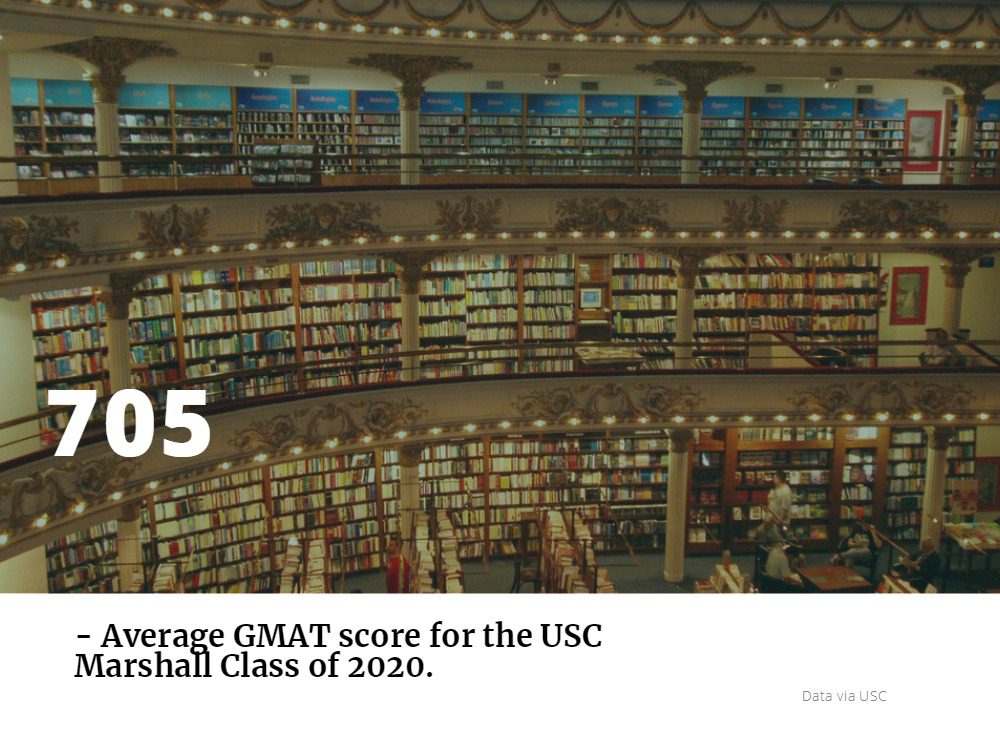
An overall look at the USC Marshall MBA Class of 2020 already reveals the ways more women in a program can have a broader impact on the school and the student’s future careers. “This year’s applicant pool was the strongest in our program’s history,” commented assistant dean and full-time MBA director at Marshall, Evan Bouffides. “They brought the highest GMAT score and the highest average GPA. The women in particular were extraordinarily well prepared.”
There may be a number of reasons why the number of women in MBA programs has historically remained low. Different studies have looked at factors like the time it takes to complete an MBA degree, work experience required, and the overall return on investment. Reasons may also reflect the gender pay gap, which makes the return on investment significantly lower for women, who studies show could make anywhere from 3 percent to 36 percent less than their male counterparts.
YOU MAY ALSO LIKE: The Best U.S. Employers for Women
Thankfully, schools like USC understand the benefits that women MBA graduates can add both to the school and workforce. Over recent years, the university has taken purposeful measures to increase gender diversity among applicants, such as programming focused on women. The investment of creating diversity at business schools mirrors an overall focus on diversity throughout the business world, which means that schools like Marshall can get ahead of the game in creating a diverse and appealing talent pool for employers.
“With more than 50 percent of our 2020 class women, it gives us a talent pipeline that employers are hungry to tap into as they go about increasing the diversity of their executive staffs,” said Mark Brostoff, Assistant Dean and Graduate Career Services Director at Marshal. “Recruiters are very happy with this great news.”
From New York To London, and More – New York News
Let’s explore some of the most interesting stories that have emerged from New York business schools this week.
In Ambitious Capstone Project, Stevens Senior Looks Under the Hood of Securitized Auto Loans – Stevens Institute of Technology School of Business News
The Stevens Institute of Technology School of Business recently profiled Austin McDonnell, a 2018 graduate whose Senior Design capstone project examined the “the quality of the individual assets comprising securitized auto loans” in order to “figure out what individual loans look like, what their default rate is, and how likely those deals are to experience losses.”
McDonnell’s next stop is Imperial College London’s Master’s Program in Finance, where he believes the Stevens coursework really set him up to succeed. “The amount of work, and the breadth of the coursework, in the Quantitative Finance program prepares you to find that starting point on huge projects that seem impossible.”

McDonnell (’18), outside the Stevens Hanlon Financial Systems Lab / Photo via stevens.edu
“I’ve always been interested in engineering, mathematics and physics, so I was just looking at the more technical schools,” he said in an interview with his alma mater. “I saw Stevens was a lot more challenging and had more to offer than the other schools I looked at, in terms of pursuing the kind of career I wanted.”
You can read the entire interview with McDonnell here.
CUEED Celebrates Its First Decade with Big Plans for the Future – Rutgers Business School Blog
Rutgers’ Center for Urban Entrepreneurship and Economic Development commemorated 10 years of nurturing entrepreneurs in an event outside the Black Swan Espresso Shop on Newark’s Halsey Street that was “part celebration, party block party, and part reunion.”
The Center’s Executive Director Lyneir Richardson reflected on the CUEED’s past, present, and future in a rousing speech.
“Our first decade was impactful,” Richardson said. “We worked with 400 entrepreneurs. In the next decade, our goal is to get to 1,000 entrepreneurs. We want to generate more impactful research and expand our programs to outside partners who will license our curriculum. The idea is not only to create a stream of revenue for CUEED but to create more impact and get more visibility for the center.”
CUEED plans to assemble its Business Hub for Creatives Program in Memphis, while “Jacksonville and Richmond have telephoned to find out how they can also replicate CUEED’s programs.”
You can read more about the Rutgers Business School CUEED and the event here.
Now Accepting Alumni and Student Entries for 4th Annual Orange Tank Business Pitch Competition – Whitman School of Business
Syracuse’s Whitman School of Business announced its 4th Annual Orange Tank pitch competition, which is set to take place during the Orange Central 2018 celebration this coming October.
The Orange Tank competition invites “current Whitman students and alumni entrepreneurs [to] submit their business venture for consideration.” Teams will present their business ideas to a panel of judges to the tune of $5,000, $2,000, and $1,000 prizes.
Alumni business applications will be accepted through Friday, August 31 while Student entrepreneurs may submit their application through Friday, September 14.
Orange Tank takes place on October 19th at 1-3 p.m. in Whitman’s Flaum Grand Hall.
Make your reservations via Orange Central and read the full article here.
Georgetown McDonough Announces New Flex MBA Program
In response to market research and student requests, Georgetown University’s McDonough School of Business is adding greater flexibility to its part-time MBA program. The updates include technological innovations for the inclusion of hybrid courses, new course delivery options, and a more adjustable duration. The idea behind the new Georgetown Flex MBA is to ensure that working professionals can better balance their career commitments with their personal commitments. Continue reading…


